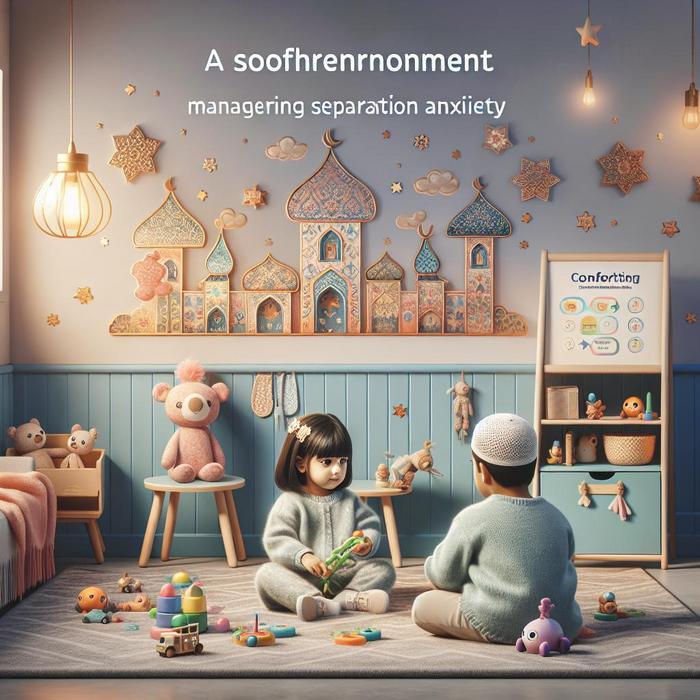Identifying and Understanding Separation Anxiety in Toddlers
When they reach toddlerhood, children often begin to experience one of the most common childhood anxieties: separation anxiety. It can be a trying time not just for your little ones, but for parents too. The good news is, there are many effective techniques for managing separation anxiety. In this post, we outline the comforting techniques that worked for us as parents.
What is Separation Anxiety?
Separation anxiety is a natural part of childhood development. It’s a phase when toddlers become aware of their own identities and start to understand that they are separate from their parents. This can generate fear and anxiety when parents are not around. It’s common and often occurs during drop-offs at daycare or bedtime.
Recognizing the Signs
- Excessive clinginess or fear when parents are out of sight.
- Difficulty sleeping alone.
- Tantrums or crying during separation.
- Frequent nightmares about being separated.
- Regression of developmental milestones when separated.
We realized that understanding and recognizing these signs was the first step in managing separation anxiety in our toddler. The next step was finding comforting techniques that helped ease the transition during drop-offs and bedtime.
Easing Drop-offs and Bedtime With Positive Reinforcement
We found that positive reinforcement played a significant role in reducing our toddler’s anxiety. Associating goodbyes with pleasant experiences helped make the separation easier for our child. Here’s how we did it:
- We established consistent goodbye rituals. This meant a warm hug, a sweet kiss, and a reassuring “I’ll be back soon” during drop-offs. This consistency helped our toddler know what to expect, lessening the anxiety.
- Encouraging self-soothing was another technique. We introduced a comfort object – a soft blanket or a favorite teddy – that our toddler could hold on to during our absence. This provided a source of comfort and familiarity.
- We also tried to keep our own emotions in check. Children often pick up on their parents’ emotions. Staying calm and confident can help your child feel more secure.
These were some of the methods that we used for easing drop-off times and bedtime. We found it extremely beneficial to empower our child to manage their own feelings of anxiety.
Encouraging Bonding Time and Gradual Desensitization
In addition to our drop-off and bedtime strategies, we also focused on strengthening our parent-child bond. Spending quality time, giving lots of physical affection, and providing verbal reassurances were essential. We noticed that this helped our toddler feel secure and loved, reducing the panic experienced during separation.
Gradual desensitization was another method we tried, following suggestions from HealthyChildren.org. This involved slowly extending the duration of separation and making sure our toddler felt safe and comfortable at each step.
Seeking Professional Help When Necessary
While these techniques were effective for us, every child is unique. For some children, separation anxiety can escalate to a point where professional help might be needed. We found resources from Mom’s Peace incredibly helpful when assessing when to seek external assistance.
Managing separation anxiety can be a tough phase in a parent’s journey. It is a journey filled with emotions, challenges, but also beautiful moments of love and growth. Armed with the right knowledge and techniques, we’re confident that every parent can navigate this phase with grace and courage!
Understanding The Reason Behind Separation Anxiety
In our quest to manage our toddler’s separation anxiety, we also sought to understand why it’s happening. By learning about the reasons behind separation anxiety, we could address the issue better. According to the UNICEF website, separation anxiety in children represents their growing cognitive skills and their emotional bond with their parents.
Importance of Empathetic Listening
Empathetic listening is a technique we found very helpful for our toddler. Understanding their fears and concerns was crucial in managing their separation anxiety. Empathetic listening involves mirroring their feelings, paraphrasing their words, and reassuring them.
Seeking Medical Advice
There are circumstances when, despite using different techniques, the separation anxiety symptoms could remain severe and interfere with the toddler’s daily activities. In that case, according to the NHS website, it might be beneficial to seek medical advice. Health professionals can help your child by reviewing their overall health and possibly providing behavioural therapy sessions.
Pets Can Help, Too
Aside from the techniques mentioned above, we found that bringing a pet into our home considerably reduced our child’s separation anxiety. A study conducted by PetMD shows that pets can bring both psychological and physiological benefits to children, helping them feel more secure and less anxious.
Avoiding Overreaction
- Avoid panicking or getting highly emotional, as it may increase the child’s anxiety.
- Try not to sneak away when the child is not looking, as it can make them feel more insecure.
- It’s also important not to scold or punish your child as it can cause more distress and fear.
Remember, the child’s separation anxiety is a phase and can be managed with patience and effective strategies.
Ensuring Continuous Support and Patience
Finally, ensuring continuous support and limitless patience was a crucial part of our strategy in managing separation anxiety. The truth is, it’s going to be a tough time for your child and you, but patience and understanding can go a long way in easing this difficult transition phase for your toddler.
Managing separation anxiety was a challenging period in our lives as parents, but with time, patience, and the use of effective strategies and techniques, we were able to navigate through it successfully while ensuring our child’s emotional well-being. We hope sharing our experiences and strategies pulls back the curtain on how separation anxiety can be counteracted and managed effectively.
